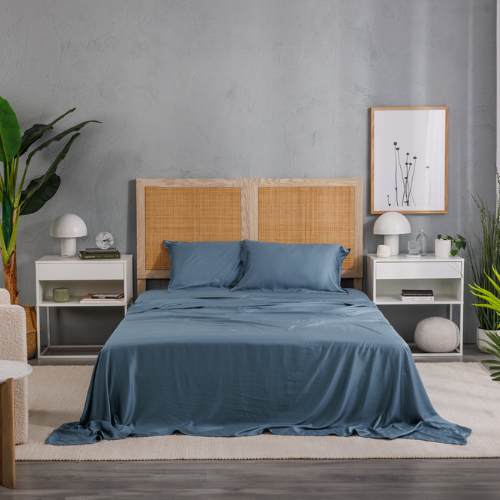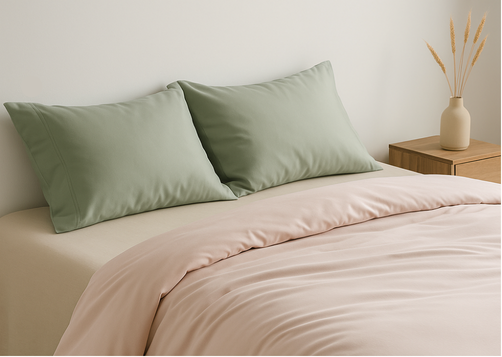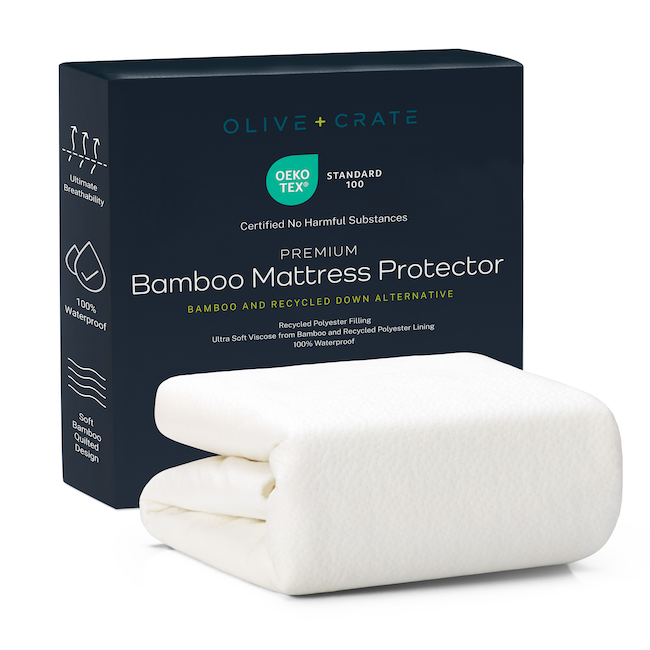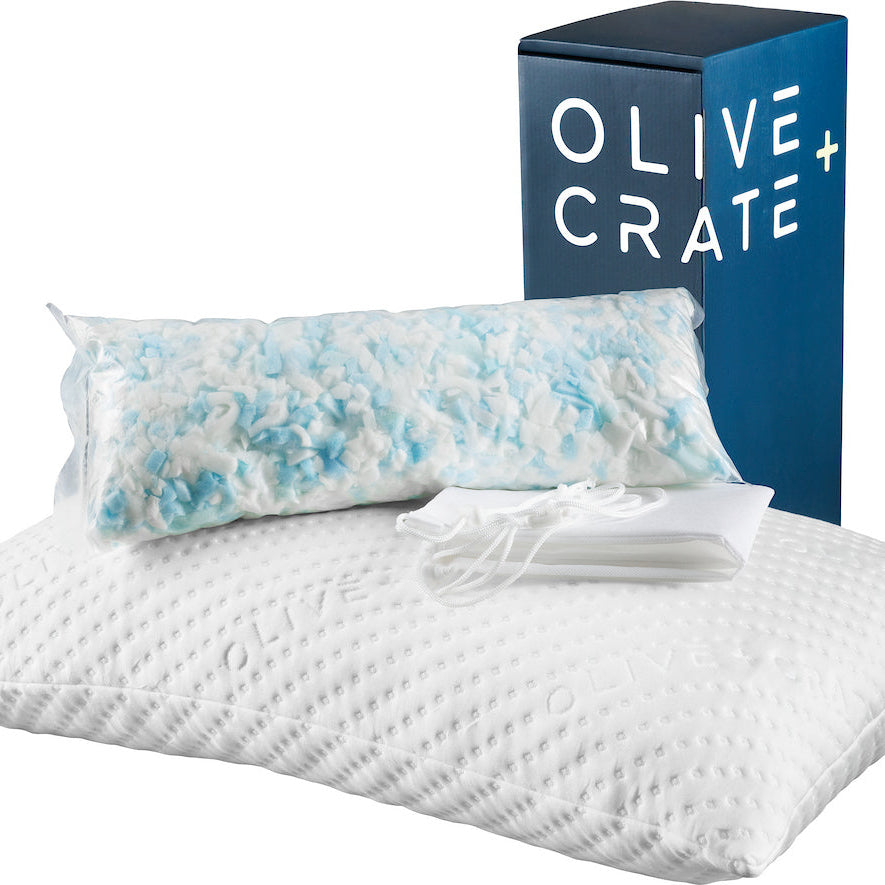If you’ve ever found yourself tossing and turning because of sneezing, congestion, or itchy eyes, you’re not alone. Nighttime allergies affect countless people, making restful sleep feel out of reach.
With the right adjustments to your bedroom environment and daily habits, you can minimize triggers and finally wake up refreshed.
In this guide, we’ll walk through common culprits behind allergies at night, practical ways to reduce them, and how high-quality bedding can transform your sleep experience.
Why Nighttime Allergies Hit Harder
Many people notice that allergy attacks at night seem more intense than during the day.
That’s because you’re in close contact with triggers for hours while you sleep. Dust mites in your bedding, pet dander on your pillow, or even mold spores in the air can make symptoms worse.
Common nighttime allergy symptoms include:
-
Congestion or nasal blockage
-
Runny nose and sneezing
-
Itchy, watery eyes
-
Coughing, wheezing, or postnasal drip
-
Sinus pressure or headaches
If left unchecked, these symptoms disrupt sleep cycles, leaving you fatigued and foggy the next day.
The Biggest Bedroom Allergy Triggers
Knowing your triggers is the first step toward relief. Here are the usual suspects:
-
Dust mites: Microscopic pests that thrive in mattresses, pillows, and blankets.
-
Pet dander: Proteins in animal saliva and skin flakes that cling to fabrics.
-
Pollen: Carried indoors on clothes, shoes, and even through open windows.
-
Mold spores: Lurking in humid areas, including around windows and under bedding.
-
Household dust: A mix of fibers, particles, and debris that collect on surfaces.
Simple Changes for an Allergy-Friendly Bedroom
1. Upgrade Your Bedding
Your bedding plays a huge role in how well you rest. Natural eucalyptus fiber, for example, is hypoallergenic, breathable, and resistant to dust mites, making it a smart choice for anyone prone to nighttime sensitivities.
If you’re exploring your options, you might also like learning more about hypoallergenic bedding or how it compares to antimicrobial fabrics.
2. Wash and Rotate Regularly
Fresh bedding makes a noticeable difference. Wash sheets and pillowcases once a week in warm water, and keep a second set on hand so you’re never stuck without a clean option.
Choosing a fragrance-free detergent also helps reduce irritation.
3. Use Protective Covers
Mattress and pillow encasements act like a barrier, blocking dust mites from settling in. Look for full zippered options that completely encase the pillow or mattress.
Many sleepers also find comfort in choosing thoughtfully made fabrics, like the ones covered in this piece on sheets for sensitive skin.
4. Keep Pets Out of Bed
As cozy as it is to share your space, pet dander easily clings to bedding. If keeping pets out of the bedroom feels impossible, try setting up a soft bed nearby so they’re still close but not on your pillows.
5. Improve Air Quality
A HEPA filter purifier captures dust, pollen, and dander from the air, while balanced humidity (around 40–50%) keeps mold from thriving.
Even cracking a window for a short time during low-pollen hours can refresh the room.
6. Keep the Bedroom Clean
Allergens thrive in clutter and dust. Vacuuming carpets and rugs with a HEPA filter picks up particles that standard vacuums leave behind.
For hard surfaces, a damp cloth traps dust instead of sending it back into the air. Soft furnishings like curtains, throw blankets, or upholstered chairs benefit from a regular wash or vacuum, too.
For more inspiration, see these bedroom allergy tips.
7. Nighttime Hygiene Habits
A quick shower before bed rinses away pollen and dust, while simply washing your face and hands helps if you’re short on time. Changing into clean bedtime clothes also prevents allergens from traveling into your sheets.
Why Eucalyptus Bedding Can Make a Difference
There’s something uniquely calming about slipping into bedding that feels cool, clean, and gentle against your skin. Eucalyptus fibers, made from Tencel™ lyocell, are naturally smooth and breathable, creating a soft, almost silk-like touch that helps you unwind the moment you climb into bed.
Because the fibers wick away moisture and discourage the buildup of dust and dander, your sleep space stays fresher for longer. The result is a bed that feels crisp and welcoming night after night, and a more restful environment for sensitive sleepers.
If you’re ready to experience the difference, explore the Tencel Eucalyptus Collection, thoughtfully designed to bring both comfort and calm into your bedroom.
Create a Relaxing Sleep Routine
Managing triggers is important, but so is the way you prepare for rest. A consistent, calming routine signals to your body that it’s time to wind down and can make your bedroom feel even more like a sanctuary.
A few gentle practices to consider:
-
Declutter before bed: A tidy room reduces dust and creates a sense of calm.
-
Dim the lights: Softer lighting helps your body ease into sleep mode.
-
Open a window briefly: Fresh air can clear out stuffiness, just be mindful during high pollen seasons.
-
Wind down with a book or tea: Screen-free rituals relax the mind and reduce overstimulation.
Pairing these habits with breathable, hypoallergenic bedding makes your bedroom feel less like a place of disruption and more like a space of comfort and renewal.
Wake Up Refreshed
Imagine waking up clear-headed, breathing easily, and ready to embrace your day. By combining breathable bedding, thoughtful cleaning habits, and a sleep environment designed for comfort, you can turn your nights into true rest.
At Olive + Crate, we believe in the small, natural changes that make a big difference, like switching to eucalyptus bedding. It’s about creating a space where comfort and wellbeing go hand in hand.













